Why Did U.S. Spy Planes Watch Over North Korea on Christmas?
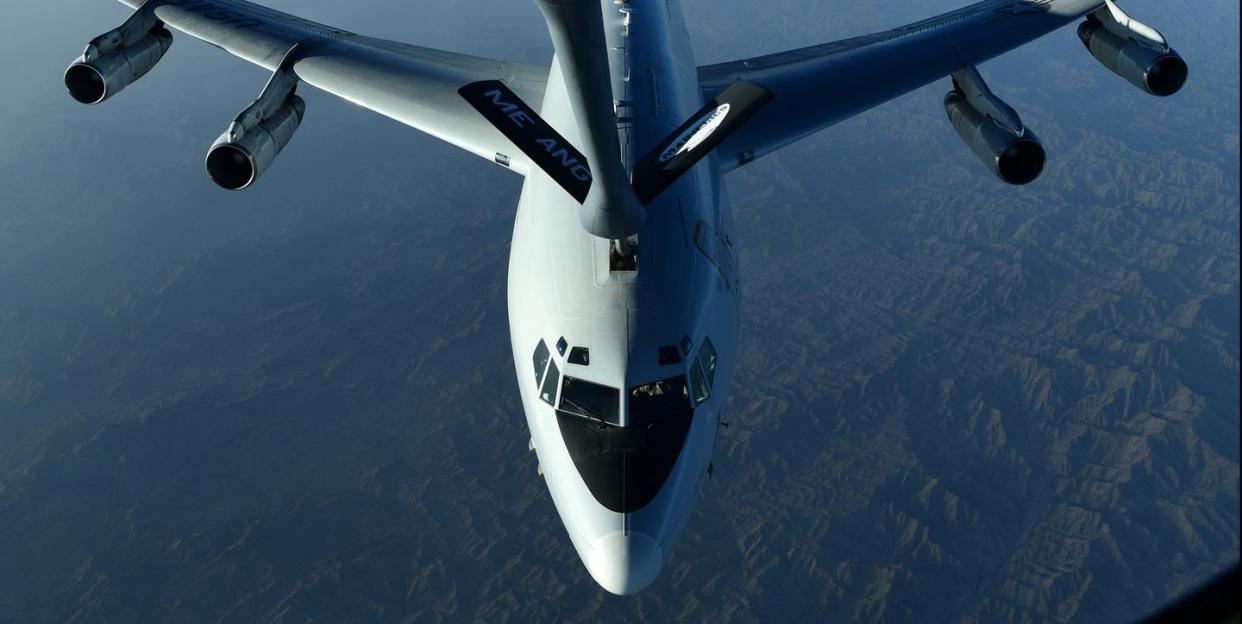
The U.S. flew four different types of spy aircraft near North Korea over Christmas.
The flights were in response to North Korea's veiled threat to send a "Christmas present" to the U.S.
In the event of a missile launch, each of the four planes reportedly involved has a different mission.
U.S. military aircraft kept vigil in the skies near North Korea yesterday, waiting for a threatened “Christmas gift” from the country’s leader, Kim Jong Un. Spy planes, including the unmanned RQ-4 Global Hawk kept an eye on the isolated country all Christmas day. The “gift,” which was speculated by experts to be a long range missile test, ultimately never materialized.
The tension started earlier this month, when North Korean state media announced that negotiations with the U.S. over the country’s nuclear weapons had been a “foolish trick.” “What is left to be done now is the U.S. option,” North Korea warned on December 3rd, “and it is entirely up to the U.S. what Christmas gift it will select to get.”
The statement set up speculation that North Korea would test a long range weapon, likely an intermediate or intercontinental ballistic missile capable of reaching U.S. bases in the Asia-Pacific or even the American homeland. President Trump downplayed the remarks, stating that perhaps it meant Kim Jong Un would send him a “beautiful vase” instead.
#UPDATE: USAF Cobra Ball Ballistic Missile Detection Platform reported airborne over Sea of Japan.
Likely eyes on North Korea.
This is the 4th surveillance/monitoring asset up in last 3 hours https://t.co/9jz9eLT27M https://t.co/rlKQS7zDR1— ELINT News (@ELINTNews) December 24, 2019
But the U.S. Department of Defense took the threat seriously, enough to scramble four different types of aircraft to search for signs of a launch. The U.S. sent RC-135W Rivet Joint, E-8C, RQ-4 Global Hawk, and RC-135S Cobra Ball airplanes, all designed to provide early warning of a test and monitor a missile launch, to fly off the coast of North Korea.
(Although The Hill states that the aircraft flew “over” North Korea, such an act would be an extremely provocative move that would likely result in the aircraft attacked by Pyongyang’s air defense forces. U.S. aircraft monitoring North Korea typically fly south of the Demilitarized Zone that separates North and South Korea, or in the Sea of Japan.)
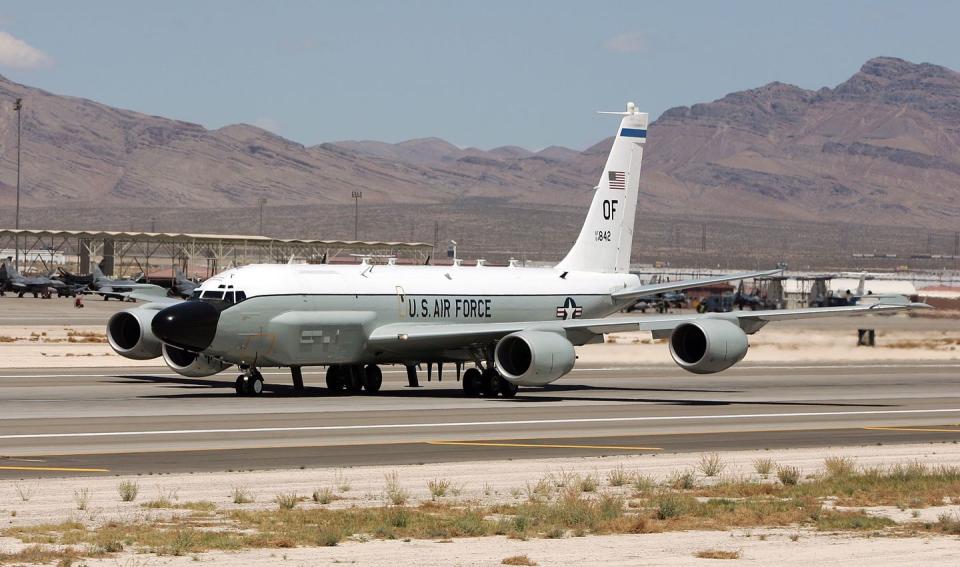
The U.S. Air Force describes the RC-135W Rivet Joint as a “near-real time intelligence collection” platform. A modified 1960s-era Boeing 707 airliner, the RC-135W has an extensive set of onboard sensors designed to “detect, identify and geolocate signals throughout the electromagnetic spectrum.” The Rivet Joint can also vacuum up the electronic signals of adversaries, from phone calls to radar transmissions, for analysis. The RC-135W fleet is based at Offutt Air Force Base in Nebraska and typically flies to Kadena Air Force Base on the Japanese island of Okinawa ahead of anticipated North Korean activity.
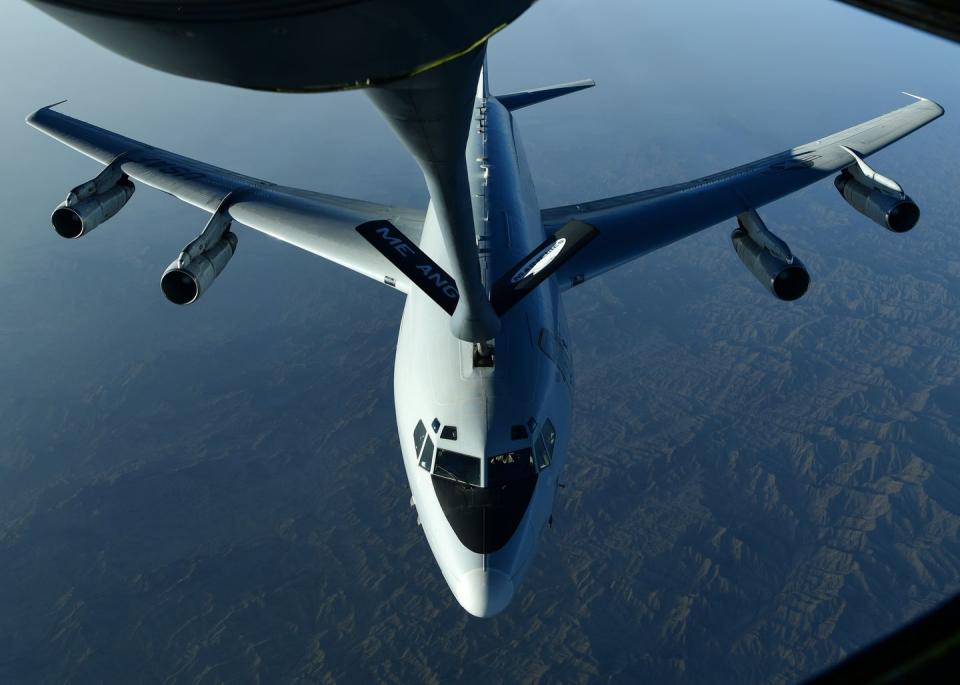
The E-8C Joint Surveillance Target Attack Radar System (Joint STARS) aircraft is another Boeing 707 outfitted with a side-looking synthetic aperture radar system. The 24-foot-long AN/APY-7 side looking radar can detect and track up to 600 targets on the ground at ranges of 150 miles. In the North Korea scenario, Joint STARS aircraft could keep track of mobile missile launchers and their support vehicles, tracking them from their hardened underground bases to launching points.
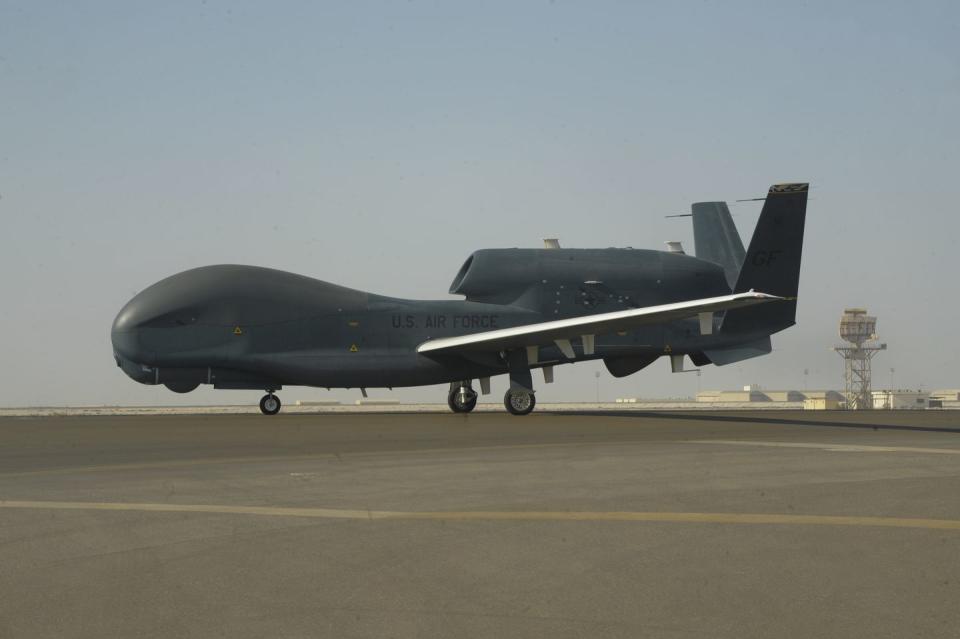
The RQ-4 Global Hawk is the largest unmanned aerial vehicle in the Pentagon’s inventory. The RQ-4 is a high-altitude, long-endurance aircraft that typically flies from friendly bases and then takes up station in a trouble spot, loitering for hours at a time. Global Hawk is packed with sensors, including an active electronically scanned array (AESA) radar, digital cameras, electro-optical sensors, and electronics designed to snoop on the electromagnetic emissions of adversaries. Global Hawk typically flies at altitudes of 65,000 feet for four hours or more. Iranian forces shot down a cousin of the RQ-4, the U.S. Navy’s MQ-4 Triton, earlier this year.
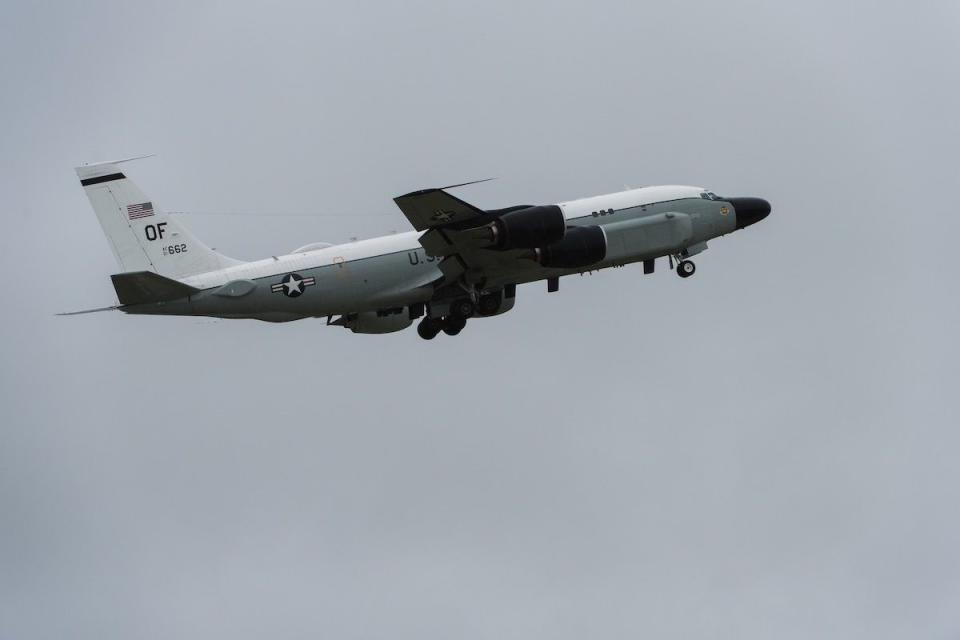
The fourth airplane to stand watch over North Korea on Christmas was the RC-135S Cobra Ball. Cobra Ball is yet another spy plane based on the Boeing 707 airframe and is equipped with optical and electronic sensors to observe ballistic missile tests. In the event of a launch, a RC-135S would record data of the missile in flight, ideally allowing analysts back in the United States to discern the missile’s capabilities. An RC-135S call sign, “Slime 99,” was observed on Christmas Eve taking off from Kadena Air Base on Okinawa and heading north to the Sea of Japan.
Together, the four types of planes provide comprehensive coverage of a North Korean missile test. The RC-135W Rivet Joint could monitor North Korean communications, hopefully picking up orders from Pyongyang to units in the field to commence a test. The E-8C Joint Stars could track convoys of launch vehicles headed to test sites, while the RQ-4 Global Hawk would observe preparations for launch. In the event of a launch, the RC-135S Cobra Ball would record data about the missile’s flight, including speed, trajectory, and other details.
Source: The Hill
You Might Also Like

